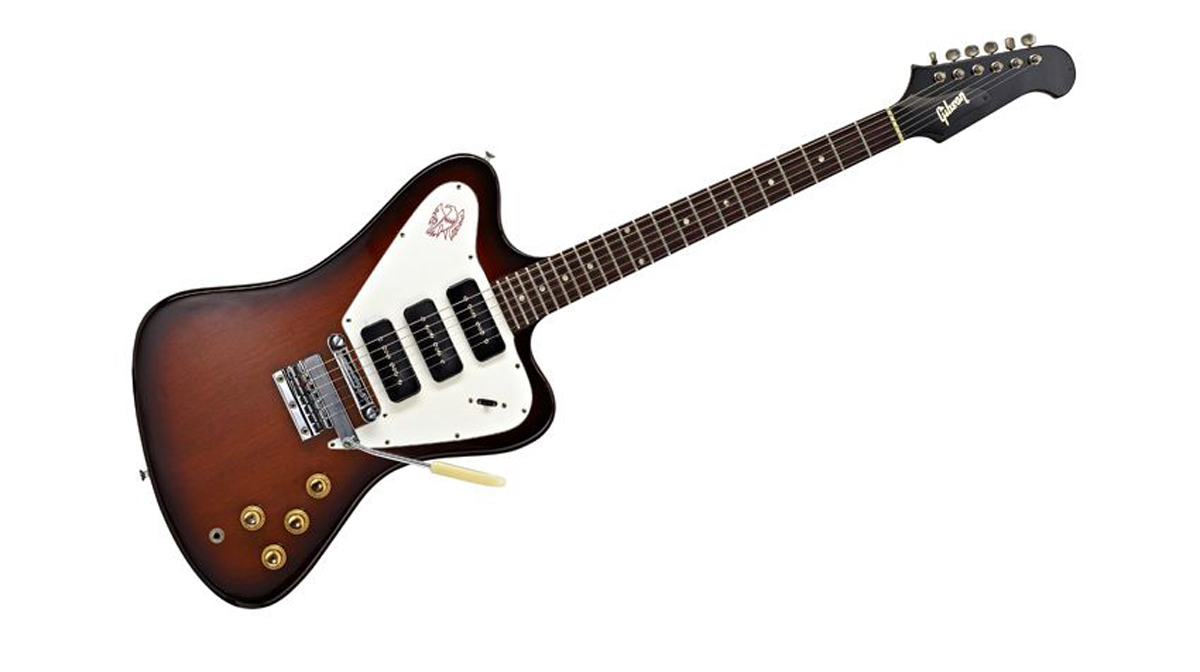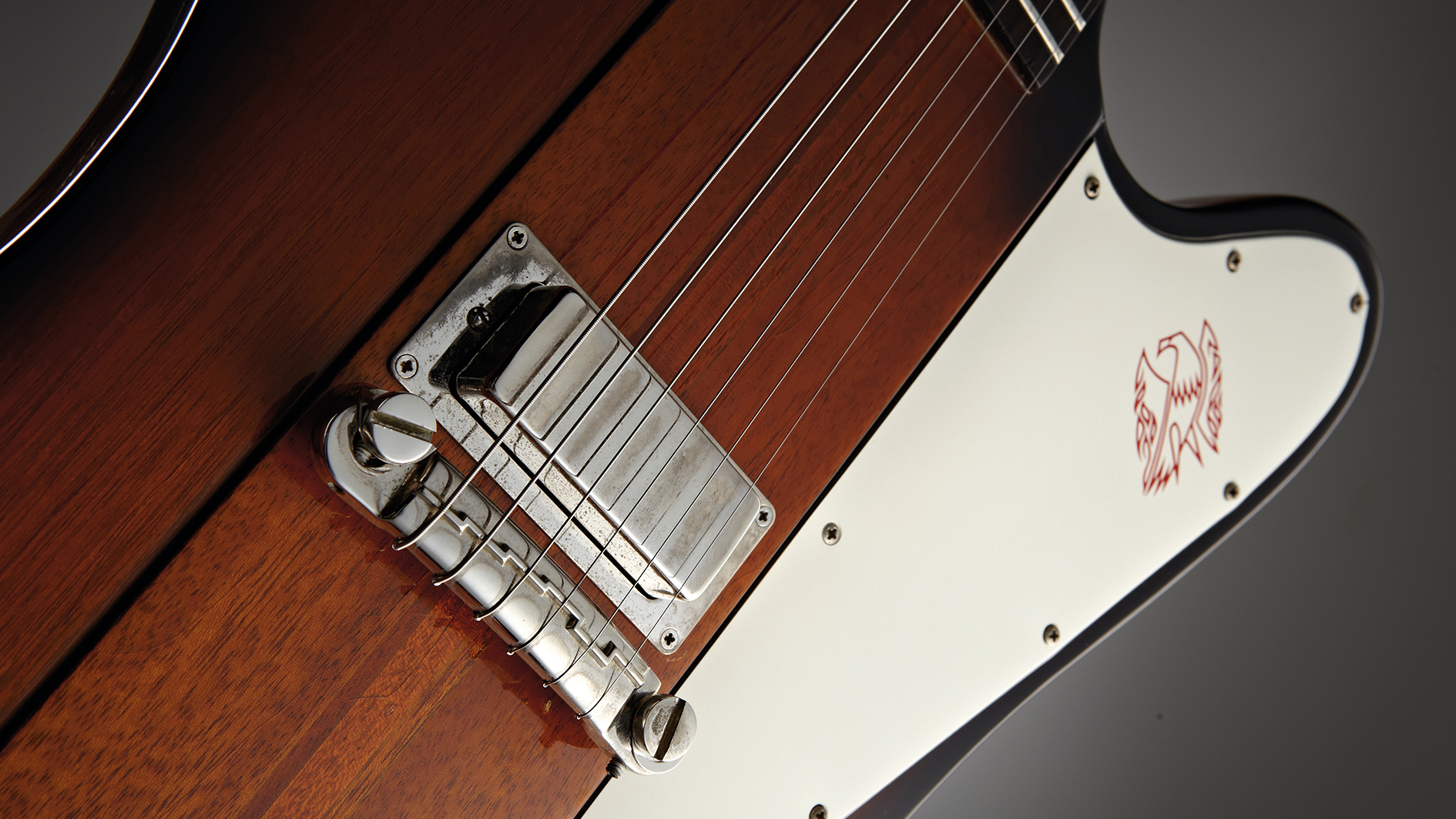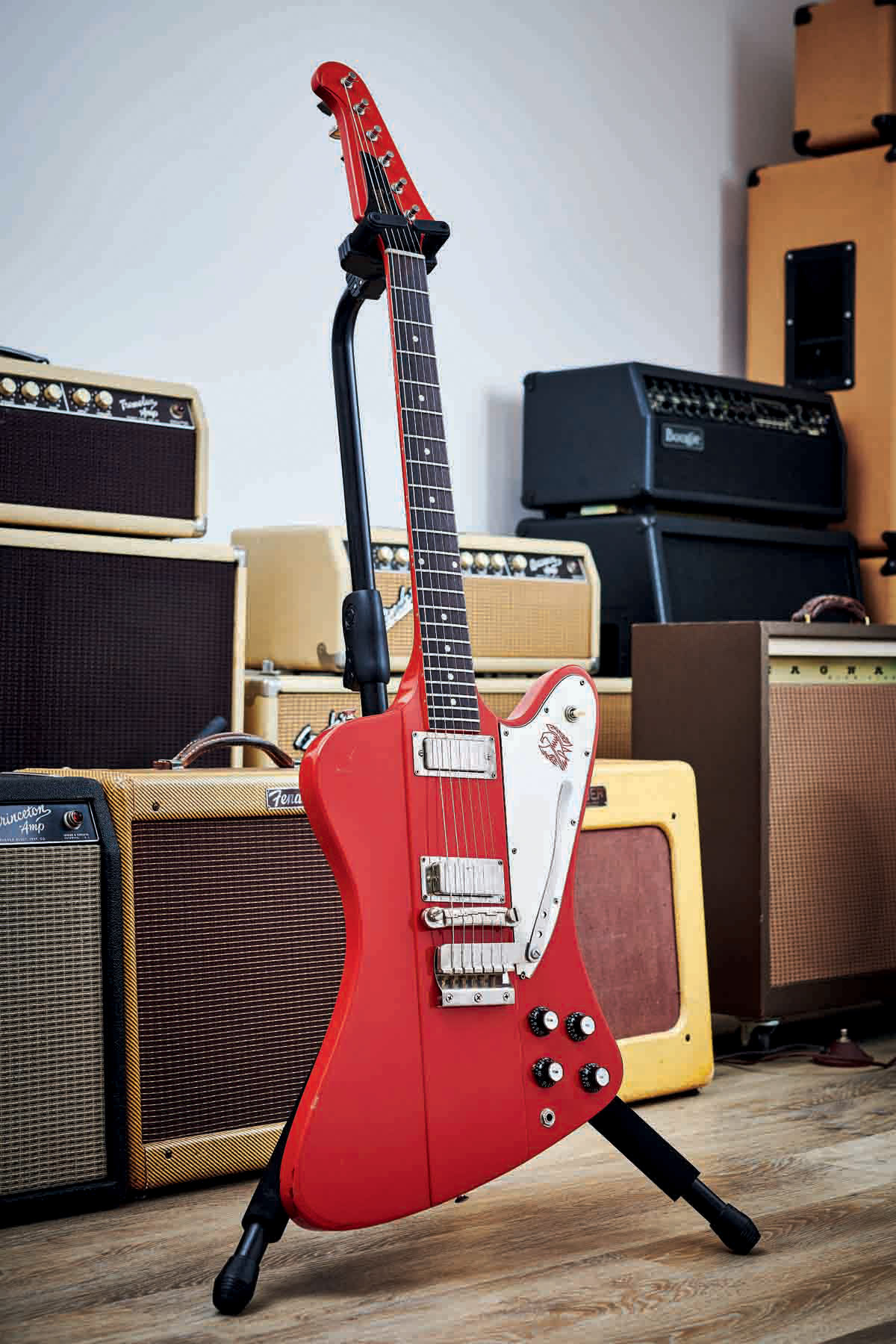Classic Gear: the rise and fall of Gibson's Firebird III
We take a look at the legendary automobile-inspired electric guitar

During the late 50s, Gibson was experiencing something of an identity crisis as it struggled to gain dominance in the rapidly expanding solidbody marketplace. While its upstart rival in California, Fender, continued to thrive as it spearheaded the new trend of sleek, ultra-modern electric guitar designs, Gibson was rendered the victim of its own success as an old-school guitar-building brand synonymous with traditional flat‑tops and archtops.
Company president Ted McCarty battled in vain to shake off Gibson’s old-fashioned image with modernistic Flying Vs and Explorers and by updating designs in Gibson’s existing Les Paul range. Alas, with Les’s influence declining and with the Flying V and Explorer neither flying nor being explored, Gibson’s vision of the future proved less convincing to the younger guitar-buying generation.
By the early 60s, Gibson was still testing the water with new designs - notably the SG ‘solid guitar’ range - when Ted McCarty met retired Ford and Chrysler car designer Ray Dietrich. Mindful of the success Fender, Gretsch and Rickenbacker were enjoying as they appealed to the classic car design aesthetics of the day, Ted began to pick Ray’s brain for inspiration.
Ray Dietrich had a brilliant mind for design, but for instrument design it was pretty wacky
Mat Koehler, Gibson
“Gibson were very conscious of what Fender and Rickenbacker were doing,” Mat Koehler, Gibson’s head of Product Development, told us in a recent interview. “Within days of Ted McCarty meeting Ray, he asked him to design some guitars - and some amplifiers, which nobody seems to know about!
“Ray Dietrich had a brilliant mind for design, but for instrument design it was pretty wacky. And I think it seemed pretty wacky to Ted, too. In ’63, after the first [Firebirds] were made, he was probably thinking, ‘What did I get myself into here?’ It was a very difficult build - and still is for us now.
"The non-reverse Firebirds aren’t so troublesome because they have a set neck. It took eight different designs for Gibson to settle on something with Ray. That’s how the Firebird became the Firebird.”

Aping the sleek, angular geometry of classic cars, the Gibson Firebird line was released in 1963 in the guise of four models, all sporting a through-neck construction and bespoke mini humbuckers: the single-pickup/dot-inlay I model; the double-pickup/dot-inlay III; the double-pickup/trapezoid-inlay V; and the triple-pickup/block-inlay VII.
Get The Pick Newsletter
All the latest guitar news, interviews, lessons, reviews, deals and more, direct to your inbox!
In keeping with the automotive theme, as a Gibson first (and in direct competition with Fender’s custom colors), Firebirds were offered in Golden Mist, Silver Mist, Frost Blue, Ember Red, Cardinal Red, Kerry Green, Polaris White, Pelham Blue, Inverness Green and Heather, in addition to their standard Sunburst.
The original Firebirds are often referred to as reverse, meaning the treble horn extends further than the bass horn, while the lower bass bout extends beyond the lower treble bout (as per the Explorer).
In 1965, however, Gibson revisited the design and - beginning with a trickle of transition specs - Firebirds were soon relaunched in their updated ‘non-reverse’ guise. With an extended bass horn and lower treble bout, along with tuners positioned across the bass side of the headstock, the new Firebird was virtually a mirror image of its former self. Furthermore, the Firebird III now boasted three pickups, albeit black soapbar P-90s. It was eventually discontinued in 1970.
1964 Gibson Firebird in Cardinal Red

The anatomy of a classic guitar...
This '64 Firebird III features a reverse headstock in matching Cardinal Red, with a six-digit serial number stamped on the back. The hardware is nickel-plated and comprises nickel-plated, Kluson banjo-style tuners with metal tulip buttons on treble side of headstock, metal pickup covers and surrounds, stud-mounted compensated wrapover bridge and a short Vibrola with flat arm.
As for the build the neck is a laminated mahogany neck-through construction, with a single-bound 22-fret Brazilian rosewood fingerboard with pearl dot inlays. This 'bird has a 24 and 3/4-inch scale, and a 1 and 11/16-inch nut width. Both neck and body are finished in Cardinal Red. The body is reverse style with an extended treble horn and lower bass bout; there are mahogany side wings glued on to the through neck, with a raised middle section.
The plastics comprise an oversized black single-layer truss rod cover with gold Gibson logo, three-layer (w/b/w) bevelled-edge pickguard with red Firebird logo, four metal cap bonnet knobs, and a white switch tip.
While the pickups and electronics feature two bespoke mini-humbuckers, two 0.022uF ceramic tone capacitors, four 500kΩ pots (individual pickup volume and tone), a three-way Switchcraft pickup selector toggle and frontmounted Switchcraft jack.
The evolution of the Gibson Firebird III
- Spring 1963: Gibson announces new Firebird line.
- Late 1963: Earliest production ‘reverse’ models released, with dual mini-humbuckers, through-neck construction and bound rosewood fingerboard.
- 1963: Around 270 Firebird III guitars registered shipped.
- 1964: Around 1,250 Firebird III guitars registered shipped.
- Early 1965: CMI and Gibson discontinue reverse-style Firebird III.
- Mid-1965: Reverse-style transitions to non-reverse style [as depicted in the top picture], featuring three P-90s, a glued-in neck and unbound rosewood fretboard.
- 1965: Around 1,020 Firebird III guitars registered shipped ('reverse' and 'non-reverse').
- 1970: Firebird III discontinued.
Rod Brakes is a music journalist with an expertise in guitars. Having spent many years at the coalface as a guitar dealer and tech, Rod's more recent work as a writer covering artists, industry pros and gear includes contributions for leading publications and websites such as Guitarist, Total Guitar, Guitar World, Guitar Player and MusicRadar in addition to specialist music books, blogs and social media. He is also a lifelong musician.
“It holds its own purely as a playable guitar. It’s really cool for the traveling musician – you can bring it on a flight and it fits beneath the seat”: Why Steve Stevens put his name to a foldable guitar
“Finely tuned instruments with effortless playability and one of the best vibratos there is”: PRS Standard 24 Satin and S2 Standard 24 Satin review


![A black-and-white action shot of Sergeant Thunderhoof perform live: [from left] Mark Sayer, Dan Flitcroft, Jim Camp and Josh Gallop](https://cdn.mos.cms.futurecdn.net/am3UhJbsxAE239XRRZ8zC8.jpg)








